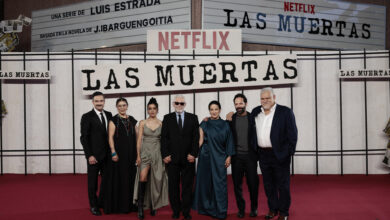‘Streaming’: It Is increasingly Similar to Cable Television
Advertisements, soap operas and regular episode premieres, common on cable, are already a reality in streaming. What do these cable TV platforms have to learn?.

Photo: Freepik
LatinAmerican Post | Julián gómez Gómez
Listen to this article
Leer en español: ‘Streaming’: cada vez es más parecido a la televisión por cable
Less and less are the added values offered by 'streaming' with respect to cable television. The idea of including advertisements, the transmission of episodes periodically and the inclusion of old soap operas mean that the format is not the promise with which it was initially sold.
Given this, cable television still retains some minimal advantages that have helped it survive. Although with fewer users, there are very few people who prefer to give in to 'streaming' if a platform is close to the cost of cable. Also, timing is critical because the offer is varied, and each person should subscribe to more than two or three platforms to get on the wave of launches from streaming giants.
The Problem of 'Streaming' and Ads
In addition to the fact that one of the differentials between 'streaming' and cable was the absence of ads, the idea of implementing them on platforms has not been properly executed. One of the main reasons is that the exclusive series of the platforms are not exactly designed to include advertisements.
When series were broadcast on cable, they always thought about the moments of the ads so as not to damage the viewer's experience. Even today, you can see the characteristic fade to black in the old series that indicated when the episode should go to commercials. With 'streaming' that does not happen.
In fact, the vast majority of series made for platforms strive to keep the viewer intrigued. Therefore, if an ad is included, the annoyance becomes greater than what the ads on cable caused. Ad-supported subscription plans have fared poorly on most platforms because the financial incentive is still insufficient to offset the inconvenience.
Also read: Does the Future of Streaming Depend (or Not) on Advertising?
The Similarities of Streaming and Cable
HBO Max has remained faithful to the television format of not placing an entire season, but dosing it weekly in several cases. This is done so as not to lose the source of income in some launches with HBO, a channel that maintains its PPV feature.
Other platforms have followed this model despite not having a PPV channel like Disney + or Star +. The most versatile is Netflix, which sometimes releases the entire season at once, divided by volume, with one episode per week or every two weeks for a few cases.
In addition to the distribution of the episodes, the inclusion of old soap operas and sitcoms blurs the line between the formats. Cable is not far away because the channels continue repeating the iconic series and rarely opt for a new production. In many Latin American countries, “Yo Soy Betty la Fea” is the number 1 trend on Netflix or Prime Video. No original series on the platforms in Latin America has managed to maintain that constant of soap operas.
This has pushed audiovisual producers to bet on melodrama in their series, the genre par excellence in the region. "Pálpito", and more recently "Fake Profile", are the most latent examples.
The Only Plus of the Cable
Currently, the only thing that keeps cable television alive is the transmission of live events. For this reason, every day, the transmission rights of the main events worldwide become more expensive. The Super Bowl, the Grammy ceremony, the World Cup or the Oscars are just some of them.
This is a luxury that the main streaming platforms have not been able to afford. The reason is simple: the streaming giants allocate most of their funds to exclusive productions that end up costing a lot of money.
Prime Video's “The Lord of the Rings: The Rings of Power” is the most expensive series, with an average of $58 million per episode. It is followed by “Stranger Things” from Netflix, the Marvel series on Disney + and “House of the Dragon” from HBO Max. For the amount they invest, it is complex that they dare to host live events that will only have a useful life on their platform for one day. For this reason, live events are the only thing in which television takes advantage.
With this advantage in mind, an advertiser is much more likely to advertise on a television event than on a streaming platform. The foregoing forces a new competitive maneuver that forces the platforms to take elements from cable and have extra income from advertising to finance their expensive productions. Only in this way can they offer an added value focused on staying with the majority of users.




